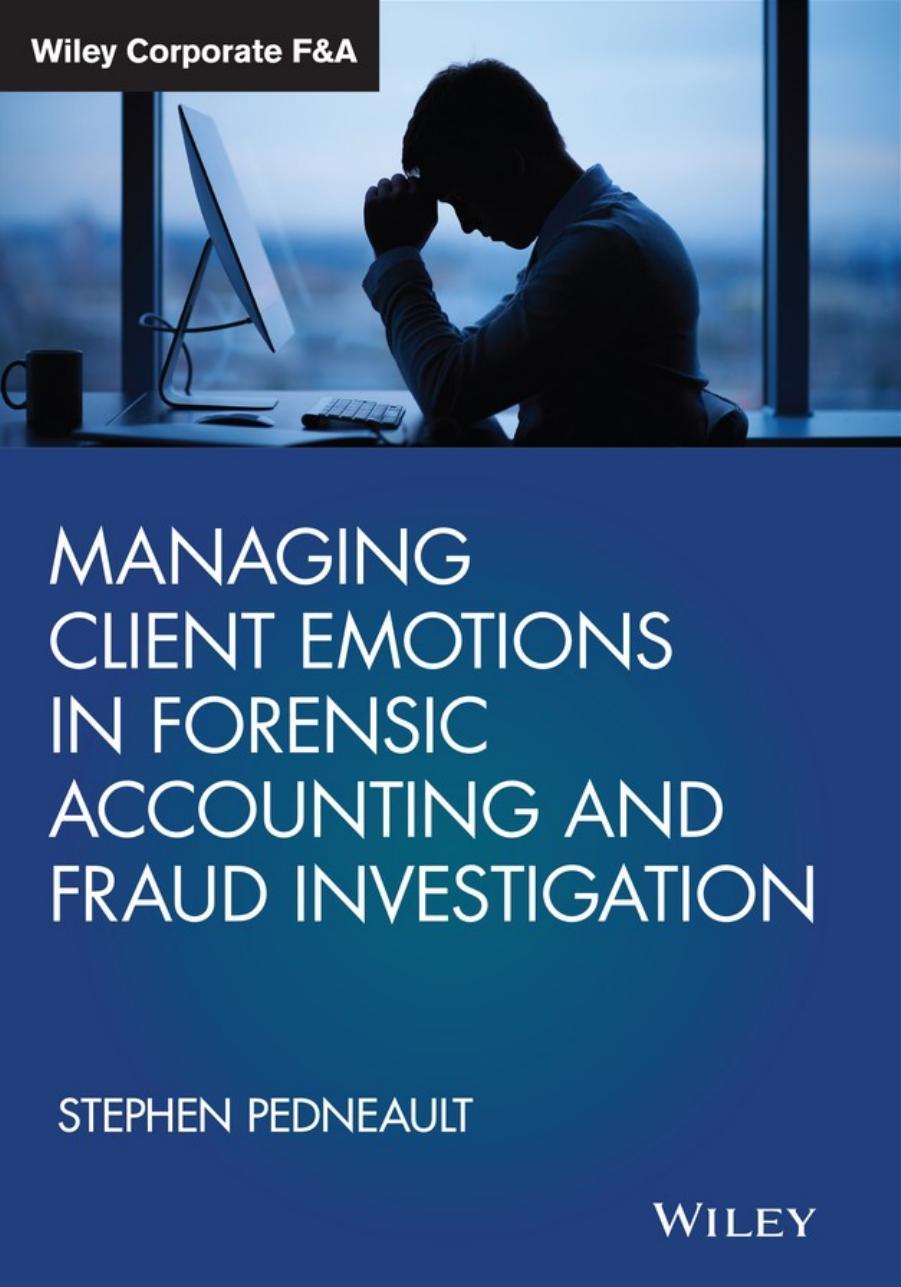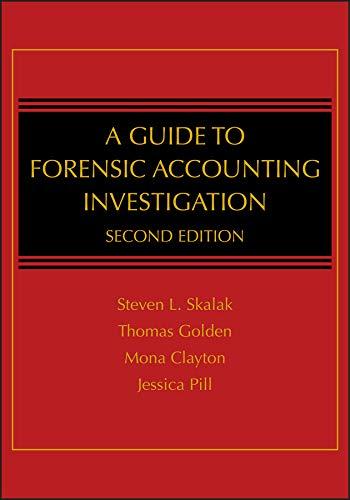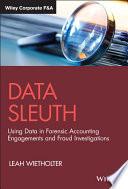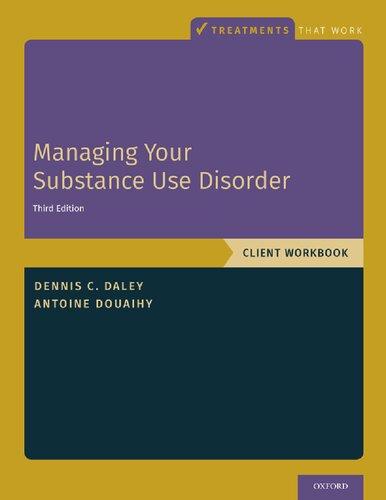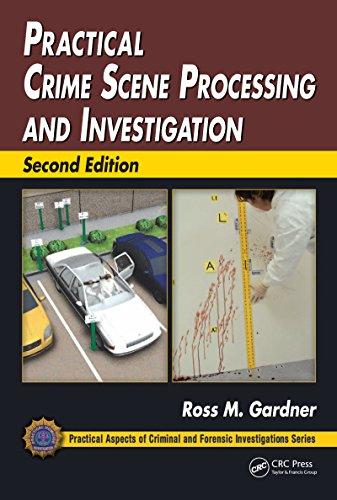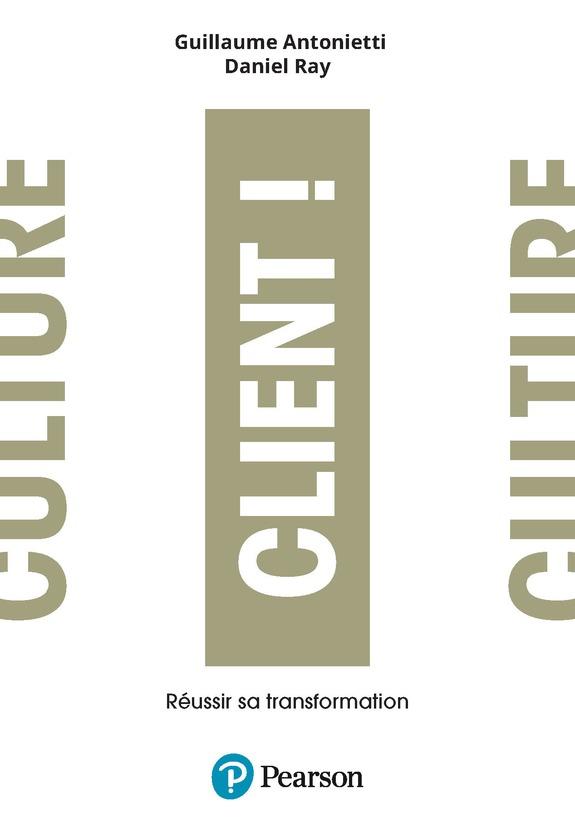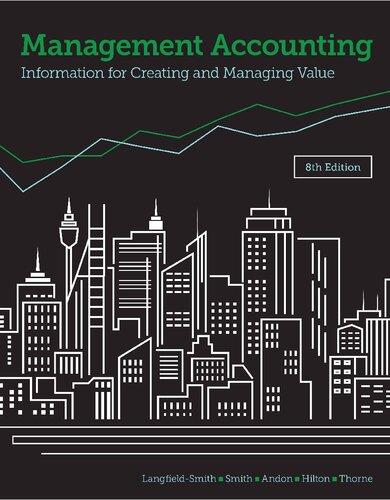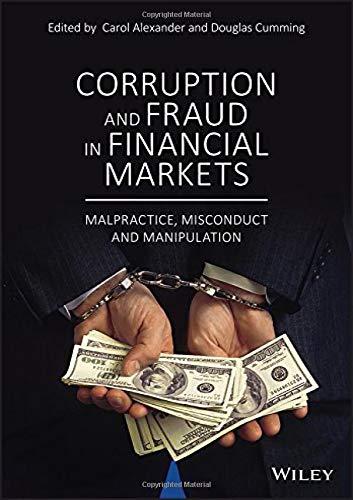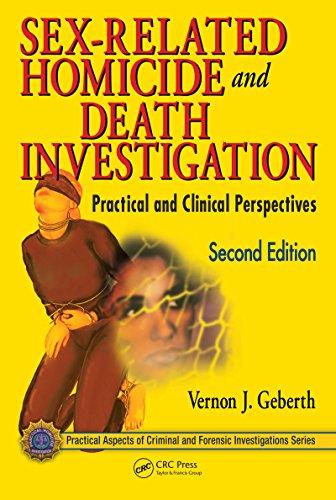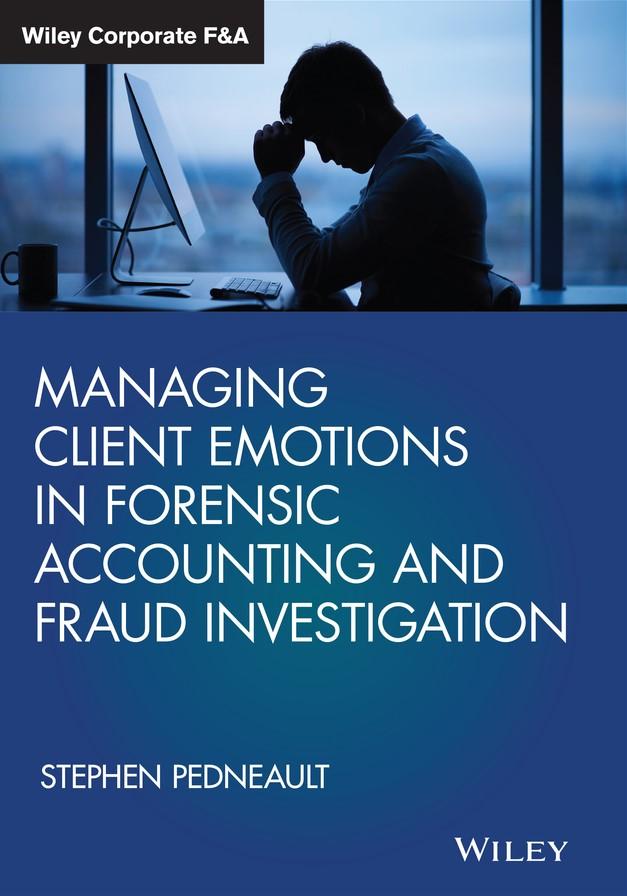STEPHEN PEDNEAULT
Copyright © 2021 by John Wiley & Sons, Inc. All rights reserved.
Published by John Wiley & Sons, Inc., Hoboken, New Jersey. Published simultaneously in Canada.
No part of this publication may be reproduced, stored in a retrieval system, or transmitted in any form or by any means, electronic, mechanical, photocopying, recording, scanning, or otherwise, except as permitted under Section 107 or 108 of the 1976 United States Copyright Act, without either the prior written permission of the Publisher, or authorization through payment of the appropriate per-copy fee to the Copyright Clearance Center, Inc., 222 Rosewood Drive, Danvers, MA 01923, (978) 750-8400, fax (978) 750-4470, or on the web at www.copyright.com. Requests to the Publisher for permission should be addressed to the Permissions Department, John Wiley & Sons, Inc., 111 River Street, Hoboken, NJ 07030, (201) 748-6011, fax (201) 748-6008, or online at http://www.wiley.com/go/permission.
Limit of Liability/Disclaimer of Warranty: While the publisher and author have used their best efforts in preparing this book, they make no representations or warranties with respect to the accuracy or completeness of the contents of this book and specifically disclaim any implied warranties of merchantability or fitness for a particular purpose. No warranty may be created or extended by sales representatives or written sales materials. The advice and strategies contained herein may not be suitable for your situation. You should consult with a professional where appropriate. Neither the publisher nor author shall be liable for any loss of profit or any other commercial damages, including but not limited to special, incidental, consequential, or other damages.
For general information on our other products and services or for technical support, please contact our Customer Care Department within the United States at (800) 7622974, outside the United States at (317) 572-3993 or fax (317) 572-4002.
Wiley also publishes its books in a variety of electronic formats. Some content that appears in print may not be available in electronic formats. For more information about Wiley products, visit our web site at www.wiley.com.
Library of Congress Cataloging-in-Publication Data is Available:
ISBN: 9781119471493(hardback)
ISBN: 9781119473657(epdf)
ISBN: 9781119473565(epub)
Cover Design: Wiley
Cover Image: © Pressmaster / Shutterstock
To Kim, Justin, and Evan. I trust you miss the table in the center of the room as much as I do.
Dad
Preface
WHEN YOU PICKED UP this book, you most likely found the title to be unique from the other fraud material and books available. You might have asked yourself: Why would someone write a book about client emotions within the context of fraud investigations?
Well, the short answer is this: It has never been done before. The long answer is that emotions play a crucial role in the unfolding of fraud investigations. In this book, you will discover how intertwined client emotions become with the fraud examination process.
Even if you have significant experience in the fraud field, you may not realize how important addressing client emotions is in successfully resolving a fraud matter. You may think that fraud examiners, forensic accountants, and financial investigators should focus their expertise on accounting, numbers, electronic records, transactions, and other similar aspects of a case, leaving the issue of emotions to other more qualified professionals, such as psychologists and social workers. Well, that is certainly a valid position, and there is certainly a role for qualified counseling and psychology professionals to help the individuals involved in a fraud case. However, based on my 31 years of experience as a forensic accountant and fraud examiner, I have found that fraud examiners cannot avoid addressing client emotions in nearly every interaction during an engagement.
My clients and referral sources have come to expect me to be not only a forensic accountant, tax expert, auditor, strategist, technology expert, interviewer, and investigator, but also a social worker and psychologist. I attribute my career success to my ability to wear all these hats while providing my services.
As I’ve reflected back on my career, I’ve tried to identify the unique approaches that have set me apart from others in my field and allowed me to succeed in my engagements. I identified four major factors crucial to my success: (1) my ability to receive referrals for future engagements based on my reputation and experience; (2) the passion I bring to work each and every
day; (3) my ability to provide superior customer service, even outside of normal business hours; and (4) my proficiency in networking and relationship building.
However, while each of those attributes has played a critical role in my success, the number-one factor that truly differentiates my approach from others is how I treat the individuals involved in my matters – whether they be victims, attorneys, suspects, witnesses, family members, or coworkers.
In a fraud investigation, the important deliverables are determining the facts, identifying the person responsible, and holding the culprit accountable for their actions. However, my firm also focuses on bringing closure to the parties involved.
There is nothing magical in what I have accomplished in my career. The two things I have learned to do well in every engagement are to listen and to care. Surprisingly, listening and caring have played a much larger role in earning the respect of my clients than anything else I’ve accomplished in an engagement. I believe this is because – sadly – few people today focus their business approach and services on these basic needs.
If you listen to clients and care about them, you will succeed. Add passion to the equation, and your career and reputation will skyrocket. Mine did.
Encountering Client Emotions
EVERY CLIENT HAS A STORY
Every fraud engagement starts with a story. It is critical that the fraud examiner obtain this story, knowing there are at least three versions to be had: the version provided by the party retaining the fraud examiner; the version provided by opposing parties, such as the individual suspected of committing fraud; and the truth. As more parties are added to the matter, the number of versions increases, but in the end there is only one version that matters: the truth.
In order to start off my discussions about client emotions, I will start with a story. Sadly, I have seen many similar stories, and this one is a great example of how client emotions become intertwined with a fraud examination.
Ireceived a phone call from an attorney who was calling about a potential fraud matter. After briefly introducing himself, the attorney explained that he represented a sister and brother regarding an estate matter. His clients’ mother had died a year earlier, and as part of the mother’s estate planning, her assets had been designated to go directly into a trust. The brother and sister were the sole beneficiaries of the trust, sharing an equal inheritance. However, the attorney had found it difficult to obtain any information from the trustee, and his clients believed the trustee had mishandled their mother’s estate and trust. Although funds were available for distribution
to the attorney’s clients, to date they had received nothing from the estate or trust.
I set up a time to meet at the attorney’s office to review the records and information he had been able to collect, as well as to meet his clients. The attorney ended our conversation by warning me that the sister was very emotional and her brother had a serious drinking problem and could become hostile.
When the day of our meeting arrived, I drove to the attorney’s office with one of my staff members. We were greeted at the door and brought into an empty office where the attorney met with us privately prior to introducing us to his clients. He said he had been meeting with the sister and brother for an hour or so and that the brother had become quite agitated toward the trustee. The attorney warned us again that the brother could be a bit of a loose cannon.
Next, the attorney brought us into his conference room, where the sister and brother were sitting at the table. The sister, a well-dressed, mildlooking woman with a petite frame, sat next her brother, a middle-aged man dressed in jeans, a flannel button-down shirt, and sneakers. She was sitting upright and attentive, with papers neatly stacked in front of her, while he was slouched back in his chair at a 45-degree angle. The attorney introduced us to the siblings, and we started the meeting.
The attorney provided his rendition of what had happened from the time the siblings’ mother had died to the present, identifying the difficulties he had encountered in obtaining information and answers for his clients. As part of his story, the attorney noted that the mother was divorced from his clients’ father, who had since died, and that she had remarried a man named Tim. That made Tim his clients’ stepfather, although his clients were well into their fifties when their mother remarried.
Sometime between the mother’s marriage to Tim and her death, their mother had redone her estate planning, changing the terms, beneficiaries, and distributions, which had previously been a simple estate left solely to her son and daughter. The new estate planning designated all of the mother’s assets to be transferred into a trust for the benefit of her son and daughter. The mother named her accountant as the independent trustee over her trust and provided him with broad authority over the management and use of her trust’s assets until Tim’s death. Upon Tim’s death, the trustee was to distribute the remaining trust assets to the son and daughter.
The trust provided two additional provisions. First, during Tim’s lifetime, the trustee was to distribute a specified amount each calendar year to the son and daughter. Second, the trustee was to allow Tim the exclusive use of the mother’s residence until his death, with the provision that the trustee had the right to inspect the property at any time, provided he gave Tim advance notice of the inspection.
So far, the scenario the attorney described was similar to many we had seen in previous matters, and we predicted that the story would identify a difficult trustee and clashes between the brother, the sister, the trustee, and Tim.
The trustee, who was retirement-aged, was a certified public accountant (CPA), as was his son, who was 20 years his junior. The son was also an independent investment manager, and his father chose to utilize his son to manage the trust’s investments. The clients’ attorney said he had requested statements from both the father and the son regarding the trust assets and investments, but to date neither had produced any information.
The clients’ attorney stated that Tim had been living in the mother’s house prior to her death and had continued living there even after she became sick and relocated to a nursing home. Tim still lived in the house, and the brother and sister had heard through neighbors that Tim had let the house and yard become run down. Tim was dealing with significant health issues, and it was uncertain how long he would live.
When the attorney finally ended his story, he allowed his clients to speak for the first time since the meeting had started.
The sister spoke first, thanking us for meeting today. She took out her notebook and read through her notes and timeline as she added more detail to the attorney’s story. The sister said she’d had a very close relationship with her mother up until the time her mother met Tim. Once Tim came into the picture, however, their relationship became strained, and it did not return to its former closeness until the last days of her mother’s life. She said that her mother had been physically and emotionally abused by Tim and had twice been treated at the hospital for injuries Tim inflicted. However, her mother would not leave Tim and returned to him after each incidence of violence. The sister stated that, even when her mother had cancer, Tim continued to abuse and neglect her. The last time her mother had been hospitalized, she had appeared malnourished. The sister said that her mother had told her that she was afraid of Tim and that she did not want to go home.
During her account, the sister’s face turned red and her eyes puffy. Tears streamed down her face.
The sister said that Tim had come to the nursing home and created a scene, which led to her obtaining a restraining order to keep Tim away from her mother. Even as her mother lay in bed dying at the nursing home, her mother feared Tim would come there, and thus she never relaxed. Her mother told her that she was so sorry Tim had interfered with her and her daughter’s prior relationship. The mother felt that the last few years of her life had been her worst, as she had suffered abuse, neglect, illness, and separation from her children. The sister had not known how bad things were between her mother and Tim, and it broke her heart to sit talking with her
dying mother, knowing she couldn’t fix the past and had little to no time left to make her mother happy again.
After this disclosure, the sister broke down and cried, but received no comfort from her brother. After a few minutes, the sister apologized for crying and described how angry she was with Tim and the trustee, whom she described as working with Tim to take the estate and trust funds for themselves. Her face tightened, and her fists clenched. She said that both Tim and the trustee were crooks, as was the trustee’s investor son, and that she wanted them all removed from anything to do with her mother’s estate and trust. She wanted them all locked up in prison. She wished Tim was dead because of what he had done to her mother. Every day that Tim lived in her mother’s house and the trustee continued to handle the funds, she said, more and more money would be improperly spent or stolen by them, leaving less for her brother and herself.
Then, the sister turned to her brother and asked if he wanted to add anything to the story. The brother’s face tensed, and he also clenched his fists. He rapidly shifted from slouching to sitting upright in his chair. The brother shouted that Tim should be dead for what he’d done to his mother and for what he continued to do, living at his mother’s house, which rightfully belonged to them. He said that he had gone to the house on a few occasions and recognized that Tim was nothing but a drunk. Tim was overweight, poorly dressed, and in poor health. The house and yard were in a state of major disrepair, even though there was evidence the trustee had paid funds to maintain the house.
The brother was clearly angry, his face bright red. He said that if Tim were to die, the trustee could be ordered to close out the estate and trust, and he and his sister could go on with their lives and find closure after their mother’s death. He said he did not have a permanent address or mailing address and that he lived for long periods of time in remote areas where mail was not important. He was leaving for the mountains of Maine right after our meeting, and we might never see him again. He might connect with his sister so she knew where to reach him, mainly to know when the trust distributions were available. If he had the option, he would handle Tim, the trustee, and the trustee’s son his way. That way, he could get closure for his sister, who could then move on with her life and not have to deal with Tim or the trustee in the future.
The brother understood that the estate and trust had to be handled through attorneys and the probate court, because that was how these things got resolved civilly. However, he said, it was just going to cost more time and much more money, and the three men, especially Tim, would likely never face any genuine consequences for their actions. The brother ended
by saying it would be best if he were to go far away and disappear into the woods so that he wouldn’t do anything rash. The brother rose from his seat, punched the table, and then threw open the conference room door and went down the hallway toward the exit. We watched him light up a cigarette on the rear lawn beyond the parking lot.
The sister said her brother tended to get very angry, especially when he hadn’t been drinking. Most of the time he was drunk; however, today he appeared sober, or at least less drunk than usual. She said that when her brother got angry like this, he needed alone time, since nothing could be said or done to calm him down. She said he would return to the meeting when he was ready, likely after a few cigarettes and perhaps a drink from something he had stashed away on his person. She said we had nothing to fear from him, since his anger was directed toward Tim, the trustee, and the trustee’s son, not us. Her brother had not visited much during their mother’s last few years. He was often gone without contact for months at a time. She said it was best for her brother to leave again for a while so that he didn’t act on his anger.
We recognized that our meeting was far from over. This was just an intermission. Up until that moment, all we had obtained was their stories about why we had been called to this meeting. We still needed to determine how to proceed, what services we were to perform, and how our work would help the attorney resolve the estate and trust matters, bringing them the closure they so badly needed. These issues needed to be discussed today, before the brother went missing again.
The meeting provided good insight into the sister and brother’s characters – and into the emotions we would likely encounter as we worked to help resolve their matter.
In the course of working on this matter over the subsequent year, we never heard from the brother again. We dealt mainly with the sister and her attorneys. We met with the sister a dozen times and spoke to her at times almost daily. She was frustrated by the delays she encountered and angered by the fact that nothing was happening while the funds continued to be diminished month after month. We were there to listen and help her work through the issues until her case was resolved.
In time, through aggressive efforts by the sister’s new attorney, the fiduciaries were removed, the attorney for the fiduciaries was ordered to return the excess fees they had paid to themselves, and the siblings were finally able to receive the remains of their inheritance. The sister sent us a handwritten letter expressing her appreciation for our support throughout the ordeal, and attributed our involvement as the one factor that had prevented her from going insane during the pendency of her matter.
A case like this illustrates how client emotions are inseparable from the facts of the fraud engagement. When dealing with these types of cases, fraud examiners should recognize that fraud, like any other type of crime, is very personal to the victim, and clients can become very emotional as they work through the process toward resolving their matter.
Clients want to tell their story. My advice is: Let them. Set up an in-person meeting, clear your schedule, and prepare to be their audience. They will provide details about their lives that have nothing to do with the present matter, such as issues they experienced during childhood, family relationships, breakups, disappointments, financial strains, pets, and more. They feel the details are important, so let them tell their story on their terms. Listen and take notes. Ask questions to clarify things, but try to keep your interruptions to a minimum. At some level, the client telling you their full story is therapy for them.
Either they will eventually get to the point in discussing the present matter or, once they feel they have provided you with all the details, they will stop talking. This moment is when you can guide them to discussing the present matter –the reason they need your services. It is important that, even if you make this transition for them by focusing them on the issue at hand, you do not make them feel as if the details they have provided up to that point have been unimportant or irrelevant. Recognize that it is all important and relevant to them.
Often, clients will ask you what you think of all of the details they provided. It is critical for you to be genuine, objective, and respectful, regardless of how irrelevant those details may seem. Building a rapport with clients starts with listening to their story, and sometimes the little details that appeared irrelevant in the beginning can prove useful later in the fraud examination.
In the end, every fraud examiner wants to know the same two things –why the individual needs a fraud examiner and what the individual hopes will be accomplished by using a fraud examiner. To that end, the examiner may be tempted to borrow an approach from the 1950s series Dragnet: “Just the facts, ma’am.” That’s certainly an approach I understand: Just tell me why you called my firm and what you hope we can do to help you resolve your matter. Let’s keep this meeting as brief as possible. However, I have found that that approach is simply not effective in reality.
My experience has shown me that, as much as I may want to surgically extract the pertinent facts and keep irrelevant conversation to a minimum, that strategy is not successful in helping to resolve the client’s matter. It’s far more effective to take a little extra time to listen to their full story.
Listening to clients’ stories will not be limited to that first interaction. I use every interaction as an opportunity to interview the individual. Some
interviews are more formal than others, but if I approach every one as an opportunity to learn more information, I may discover details that were omitted in previous meetings, which will only help me in my fact-finding process. Sometimes, a subsequent opportunity to ask questions and listen to a client’s responses has led to my discovering details of other activities that I’d known nothing about up to that point. This proved to be the case in the following engagement.
We were working with counsel on a matter involving a school finance manager who appeared to be stealing funds from the school. Families were sending tuition and other payments to the school, but the funds were not reaching the school’s bank accounts. Although the school’s enrollment was strong, the school was in poor financial health, and its reserve funding was depleted.
We scheduled a time to meet with the finance manager at the school, gain an understanding of the school’s finances, and obtain access to all the financial records, including bank statements, paid invoices, and deposit details. When we arrived, a very nervous administrative employee who worked with the finance manager met with us. She said the finance manager had not come to work as planned, and that if we wanted to meet with the finance manager, we would have to reschedule for another day. It was obvious that the woman was nervous, as well as caught in a difficult position, since her supervisor hadn’t provided any notice or explanation for her absence. We used the interaction to provide the administrative employee with assurances that we simply needed her help and the fact that the finance manager had not shown up was in no way a reflection on the administrative employee. We then sat down with her to gain a general understanding of the school’s finances, systems, and operations. In other words, we started to establish a rapport with her.
Seeing that we were at the school and had not received notice of the finance manager’s absence, we assumed that the finance manager must have realized her illegal actions were about to be uncovered. She would avoid meeting with us and having to explain her actions, buying herself perhaps a few more days. (It turned out we were right: The finance manager’s unauthorized diversion of funds was uncovered, and she was ultimately held accountable for her thefts.) However, the goal in our initial meeting was not to reveal any of this to the administrative employee. We needed her to help us, so we needed to minimize – in her mind – our involvement in this matter.
While we were at the school, we had the administrative employee identify the location of the financial records, including the bank statements.
The administrative employee showed us to the file cabinets and told us that the bank statements were all maintained offsite. We asked her how many bank accounts there were, and she said there were many. We asked her why the bank statements were kept offsite. She couldn’t explain to us why they were not maintained in the file cabinets with the school’s other financial records. She said that most of the accounts were maintained by the finance manager, but that there were other smaller accounts maintained by other individuals involved in the school. We created a list of these accounts and identified the individual associated with each account’s records.
We collected two years’ worth of financial records from the file cabinets and secured them in our cars to transport them to our offices for safekeeping. We thanked the administrative employee for her help and told her how much we appreciated her helping us find the financial records.
We then asked the administrative employee to contact anyone who maintained any of the school’s bank account information or any other type of school financial records and instruct them to bring all those records to the school the next day – 24 hours from that point. The administrative employee could tell each person that auditors were looking for the school’s financial records and needed to have the statements and records back at the school to continue their audit. We told her we would return tomorrow to retrieve the bank records. Once again, we told her that we really appreciated her help and we looked forward to meeting with her again tomorrow. At that point, she seemed much more relaxed than when we’d first met her.
The next day, when we returned to the school, the administrative employee told us that the finance manager had not come to work again, but that she had dropped off a box of bank statements in her office. The finance manager must have come to the office after school hours and left the box on her desk. The administrative employee had gone through the box that morning, sorted the statements by bank account, and organized them for us. She also told us that others had brought their account statements to her that morning, and she had those records organized as well.
We took out the list of accounts we had created with her the day before and asked her if statements for all of the accounts she’d identified had been received. She said that they all had, except for one. When we asked her what account it was, she said it was a sports account, which the athletic coach and his wife managed from their house. We asked her if she had requested that the coach bring all of the statements to her at the school this morning. She said she had, but that she hadn’t yet received anything. We then asked her to tell us about the sports program and the coach.
She said that the coach and his family had been running the sports program at the school for many, many years. She said that they handled the account on their own, receiving their statements directly at their house and taking care of their own deposits and payments. She said that her office
really had nothing to do with the sports account, and it had been that way as long as she had been at the school – some 10 or more years – and that she didn’t think there was a lot of activity involved with the sports account.
She said that families paid for their children to participate in the various sports teams and programs and that the costs associated with those programs were paid from the sports fees collected. We asked her what the coach and his family were like, where they lived, and what she knew about them. She said they lived right around the corner, in a house not far from the school, and as far as she knew, this was the coach’s only job. She said the family had two children who attended the school (tuition-free, since they were school employees). She said she believed the coach’s wife had a job, but did not know what she did or where she worked. She thought the coach had obtained a credit card in the school’s name to use with the sports program, but she had never seen any of the credit card statements.
She seemed to be getting nervous again, and she asked us if the coach was in trouble. We told her it wasn’t her fault if someone did not bring in their records and that we were only seeking the bank statements and financial records for the school so we could review them. However, we now also needed to know why the coach had not brought the sports account records to the school as requested.
We asked her to call the coach and tell him that the auditors were at the school and wanted him to bring the bank statements and financial records to the school that morning. We left her to make the call and went into a conference room to review the records that she had organized for us.
About 45 minutes later, the administrative employee came into the conference room and said that the coach was in the lobby with a box of records. We went to meet the coach and introduced ourselves. He looked very nervous. We then asked the coach to join us in the conference room. We told him we were conducting a review of the school’s finances and as such we needed all of the school’s bank statements. He still looked nervous. Rather than diving right into things, I decided to take a different approach and see if his nervousness continued or diminished as we spoke. I asked him to tell us about the sports programs at the school. He described the various sports programs and teams and his family’s involvement. He said that he and his wife had attended the school when they were younger, and now their children attended. During the conversation, his nervousness did not diminish. I asked him how the finances worked for the sports programs, and he told us about the fees and the nature of the program’s expenses, like uniforms, field rental costs, and referee fees. Everything he said appeared straightforward and consistent, but he remained anxious.
We asked him if he’d brought all of the bank statements, paid invoices, and deposit records for the program, and he said that he had. When we asked him why he maintained the records at his house rather than the
school, he said it had always been that way, and it was easier to keep everything together at his house. He said no one had ever asked him for the records in the past. We asked him why he hadn’t brought them this morning as requested, and he said that he wanted to be able to explain them to the auditors when they reviewed them. His agitation grew.
We thanked him for bringing in the records and told him that we would go through them, along with all of the other accounts, and would circle back with him if we had any questions. As we finished our conversation, we asked him one final question: When we went through the financial records for the sports program, would we find anything that could be a potential issue regarding the finances and how they were handled?
He said that that was what he wanted to talk to the auditors about. He was now the most nervous he had been since we began talking. We asked him if he would like to tell us why he was so nervous. He said that when we went through the bank account, we would see expenses unrelated to the sports programs. We asked him to describe these types of expenses, and he said he wasn’t sure if he should be talking with us. We told him that we understood and that we would get to the truth one way or the other once we reviewed the records. We also already knew about the credit card. We told him we weren’t meeting with him to judge him, but rather we just wanted to get his side of the story about the school’s sports program funds.
When he heard that, his face relaxed a bit, and he said that the check payments and credit-card charges were for personal and family expenses rather than school-related expenditures. We asked him to provide some detail about these expenses and spent the next hour or so going month by month through the bank statements, having him identify the personal expenses he’d paid with the school’s sports funds. He also detailed how not all of the sports fees collected had been deposited, because he and his family had needed the funds at times to pay their mortgage or other expenses. Then he took us through the monthly credit-card statements, which revealed that the credit-card activity had nothing to do with the sports programs.
After reviewing all of the records, we thanked him for meeting with us. We told him he could have gone another way, by discarding all the records and declining to speak with us, but by being forthcoming, at least it was now all out on the table and we could work with the school, counsel, and him to resolve the issue of his misuse of school’s funds. He looked much less stressed and nervous as we ended the meeting.
At the outset of this matter, we’d had no idea there was a problem with the school’s sports funds. We knew there had been an issue with the finance manager and with tuition and fees not being receipted and deposited into the school’s bank accounts. However, we had no idea there was a completely
separate issue with the sports program’s finances. By listening respectfully to the administrative employee’s story – and then treating the coach the same way – we were able to uncover a completely separate problem that was easier to quantify than the original issue.
ROLLERCOASTER
During a fraud engagement, individuals may become frustrated, angry, or depressed. They may break down and start crying during parts of their story and then turn angry during others. It is prudent to prepare for mood changes and expect a rollercoaster ride of emotions. Throughout it all, actively listen to clients and allow them time to regain their composure as needed. The impact of being a victim of fraud, or being accused of fraud, is very personal and the individual will likely be under a significant amount of stress. Their emotional state may be very unstable, and they may feel violated, especially if trusted family members or friends are involved in the matter, which is often the case.
It is important to note that while I discuss the victim’s perspective in this book, these points are equally valid when the fraud examiner meets with other individuals involved in the matter. Regardless of the individual’s role in the matter, everyone is entitled to the same genuine, objective, nonjudgmental, and respectful approach, and they are entitled to tell their story. Remember, there are three versions of every story, and the fraud examiner’s goal is to determine the most important one, the only version that matters: the truth.
The role of the fraud examiner is to determine what happened, to the extent possible, given the limitations that arise in every case. Limitations often include missing information, lost or deleted files, and lack of access to key individuals involved in the matter. It is not the role of the fraud examiner to determine guilt or innocence. That determination is the sole responsibility of the trier of fact –the judge or the jury. Thus, to the extent practical, even in the most difficult matters the fraud examiner needs to set aside casting judgment and instead focus on obtaining the facts, which at times is easier said than done.
However, in determining the facts, it is also important to recognize that fraud examiners are only human, and some matters involve very difficult details, especially when children and physical abuse are involved. I discuss strategies for the fraud examiner dealing with their own emotions later in the book.
Before we continue this journal of client emotions, I think a brief discussion regarding feelings versus emotions is warranted. Merriam-Webster defines feelings as “one of the basic physical senses of which the skin contains
the chief end organs and of which the sensations of touch and temperature are characteristic.”1 Included in the definition is “an emotional state or reaction.”2
Merriam-Webster defines emotions as “a conscious mental reaction (such as anger or fear) subjectively experienced as strong feeling, usually directed toward a specific object and typically accompanied by physiological and behavioral changes in the body, a state of feeling.”3 While one definition appears to address to physical conditions while the other relates to nonphysical reactions, the terms have a relationship, as each word is used within the definition of the other. Throughout the rest of my book, I will refer to feelings and emotions simply as emotions.
In the next chapter, I advocate for an approach where the fraud examiner anticipates client emotions and chooses to address them rather than ignore them.
END NOTES
1. “Feeling,” Merriam-Webster Dictionary, accessed January 11, 2021, https://www.merriamwebster.com/dictionary/feelings.
2. Ibid.
3. “Emotion,” Merriam-Webster Dictionary, accessed January 11, 2021, https://www.merriamwebster.com/dictionary/emotion.
CHAPTER TWO
Client Emotions
EXPECT CLIENT EMOTIONS
Client matters typically start with a phone call, email, or other form of communication requesting fraud-related services. At my firm, we almost always receive a phone call, an email, or a voice message requesting that we call a prospective client. During that initial call, my staff and I try to get an idea of what the matter involves, along with the names of the parties involved. We perform a procedure we call “triage,” where we complete an intake form to ensure we’ve captured the party names, attorney names (if attorneys are involved at that point), a short description of the matter, and the issues requiring our services. We then perform a conflict search to ensure that we can be objective and free of any conflicts of interest, such as a relationship to the issues or parties in the matter.
Our forms are saved in a three-ring binder. If we end up performing services in the case, we move the form into the matter folder. If we don’t end up having an initial meeting or are not retained, we save the forms within the original binder. Often, we receive subsequent calls about a potential matter that is surprisingly familiar to us. We then stop the call and scan through our forms, quite often finding that we have received a previous call about the same matter. Unless the caller is the same person who originally called us, we have to inform the new caller that we’ve received a prior call in which details of the
case were shared with us, and for that reason, we have to decline involvement the matter, as a conflict of interest likely exists.
During the initial call, while we are obtaining a short version of the matter, we also try to gain an understanding of the potential client’s emotional state. If the caller has not provided us with details about the other parties and their emotional states (as they often do, unsolicited), we ask about those as part of our triage process. Knowing that every matter has emotional issues, we look for certain key emotions, such as anger and hostility, especially in the parties on the opposing side of the matter. First and foremost, our concern is our safety, and knowing whether one or more parties has anger issues is critical to our well-being. It’s also helpful for us to know when a party with anger issues possesses a weapons permit or hunting interests (these circumstances cause the hairs on our neck to stand up).
In many cases, the caller is an attorney representing a client. In some other cases, the individuals who call our office represent an organization or are pursuing a personal matter. In those cases, part of our triage process involves instructing the individual to obtain counsel, since my firm’s policy is that our services can only be retained through counsel. We do this to establish attorney–client privilege under the attorney work-product doctrine. We also ask that clients instruct their attorney to call us, once the attorney has been retained, so we can discuss the potential matter and solicit more details.
When the client’s attorney calls, they often describe their client’s emotional state. If for some reason they don’t, we ask them about emotional states as part of our triage process. When the client has a longstanding relationship with the attorney, we often receive a lot of background detail about the client and their emotional state. However, if the attorney is new to the client, we often are limited to comparing initial notes and impressions and must wait for the initial meeting to gather more detail.
While obtaining a brief summary of the matter, a fraud examiner should already be thinking about the types of emotions involved in the potential matter – not just the client’s emotions, but the emotions of other parties involved as well. A fraud examiner can often predict the likely emotions to be encountered based on the limited facts provided, as well as how long the potential matter has been going on. The duration of the matter up to that point is often a good predictor of the emotional state of the parties.
If the potential matter has just been discovered or initiated, we often encounter denial or anger. If the matter has been pending for months or even years, the range of potential emotions can be much greater. As I discuss later in the book, individuals involved in financial matters requiring a fraud examiner
often experience similar emotional states to people going through the grieving process (e.g., denial, anger, bargaining, depression, and acceptance). Depending on the timeline of the matter, the fraud examiner may be able to estimate the parties’ emotional states. (I choose the word “estimate” rather than “predict,” as I have sometimes been surprised to see the client’s actual emotional state when we meet.)
Where practical, the fraud examiner should begin every new matter with an initial in-person meeting. If the potential client cannot meet in person, the examiner should set up a virtual call. It’s important for the fraud examiner to see the potential client, to visually assess them while listening to them talk. In these meetings, an experienced fraud examiner can gain a sense of the client’s emotional state and size up whether they want to work with them. The same holds true in meeting an attorney. My firm has walked away from many great cases because we didn’t want to work with a client or their attorney based on an impression we picked up on during the meeting.
In a few rare instances, my firm has lost a referral source for declining our involvement in a potential matter, but experience has shown me that I need to trust my instincts. When my sixth sense tells me something isn’t right about an individual or a matter, I know I need to walk away. In some cases, I need to run. That turned out to be the case in the following story, where my instincts alerted me to something “not right” in the client’s story.
Ihadscheduled a meeting with an attorney I’d worked with on past cases, regarding a matter where employees were stealing funds from an organization. As I regularly do, I brought someone from my office with me so the two of us could listen to the potential matter, assess emotional states, ask questions, and take notes. Often, the person I bring is the person who will work on the matter with me, so they can hear things firsthand right from the inception.
When we arrived, we met the attorney and several individuals who were sitting at a conference table. As the attorney introduced us to his clients, each expressed how excited they were to meet us and to gain our help in resolving their matter.
After the introductions, one of the individuals sitting at the head of the table identified himself as the executive director. He started talking about the organization, what it did, the locations that it had, the systems that it used . . . all to provide us background on the issues he was about to describe. He identified one particular location where he and the others in the meeting
